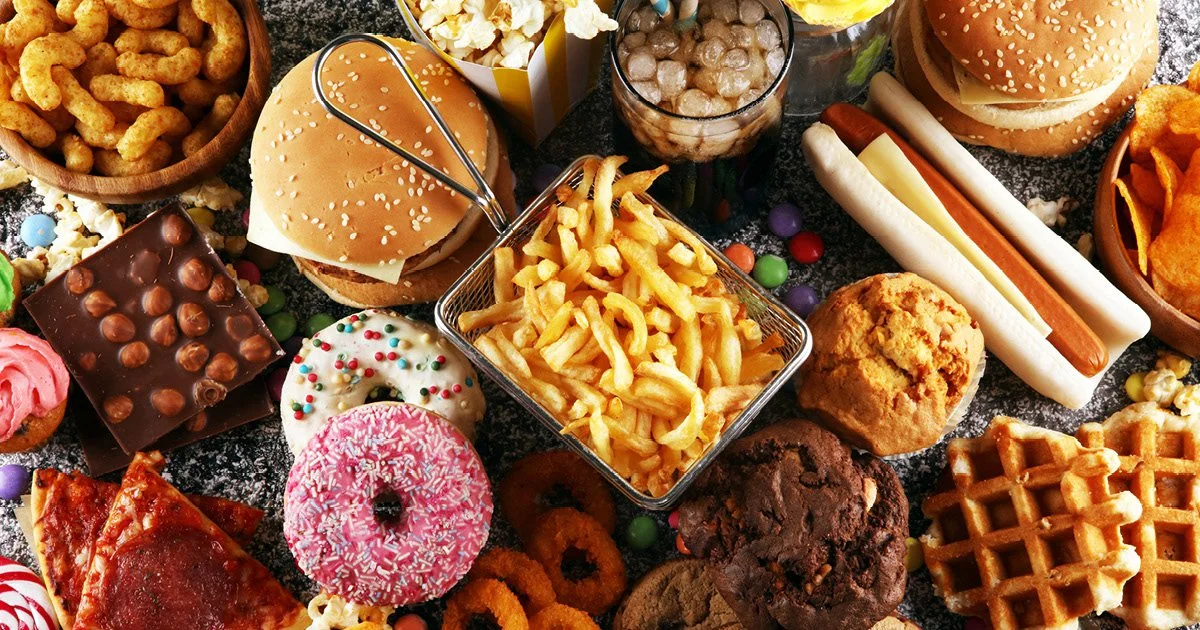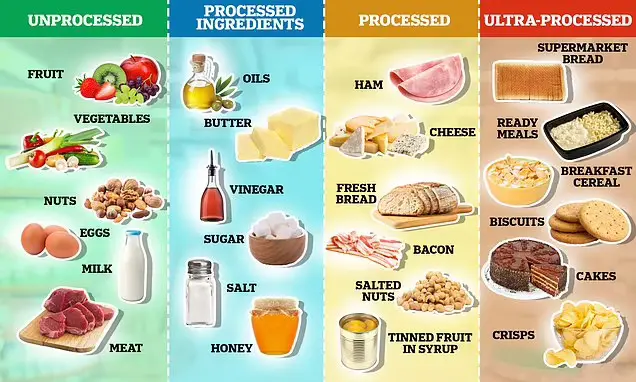When you hear the term "ultra-processed food," what comes to mind? While many people think of obvious examples like soft drinks or instant noodles, the category is far more extensive – and potentially more concerning – than most realize. Understanding ultra-processed foods is crucial for making informed decisions about your diet and health.
10 Examples of Ultra-Processed Food: What You Need to Know

What Makes a Food "Ultra-Processed"?

According to the NOVA food classification system (the global standard for food processing classification), ultra-processed foods are industrial formulations made with ingredients never found in home kitchens. These products typically contain five or more ingredients, including substances like hydrogenated oils, modified starches, protein isolates, and artificial colors or flavors.
Wondering if your food is ultra-processed? Our AI-powered app can instantly analyze any food item and tell you its exact NOVA classification.
Why Should We Care About Ultra-Processed Foods?
Recent research has linked high consumption of ultra-processed foods to several health concerns:
- Increased risk of obesity
- Higher rates of cardiovascular disease
- Greater risk of type 2 diabetes
- Potential impact on mental health
- Reduced overall nutrient intake
10 Common Examples of Ultra-Processed Foods
Let's explore some everyday ultra-processed foods you might want to avoid:
1. Carbonated Soft Drinks
- Contains: High fructose corn syrup, phosphoric acid, artificial colors
- Additional ingredients: Carbonated water, natural and artificial flavors
- Why it's ultra-processed: Uses industrial ingredients and chemical processes
- Healthier alternative: Water with fresh fruit slices
2. Packaged Snack Cakes
- Contains: Modified starches, artificial preservatives, emulsifiers
- Additional ingredients: High fructose corn syrup, artificial flavors
- Why it's ultra-processed: Complex ingredient list with industrial substances
- Healthier alternative: Homemade baked goods with whole ingredients
3. Instant Noodle Products
- Contains: Modified starches, hydrolyzed proteins, artificial flavors
- Additional ingredients: Palm oil, sodium phosphate, MSG
- Why it's ultra-processed: Industrial ingredients and artificial additives
- Healthier alternative: Fresh noodles with homemade sauce
4. Breakfast Cereal Bars
- Contains: Soy protein isolate, high fructose corn syrup, artificial vitamins
- Additional ingredients: Modified corn starch, artificial flavors
- Why it's ultra-processed: Multiple industrial ingredients and additives
- Healthier alternative: Fresh fruit with nuts or homemade granola
5. Pre-Made Frozen Dinners
- Contains: Modified food starch, hydrolyzed proteins, preservatives
- Additional ingredients: Sodium phosphate, artificial flavors, colorings
- Why it's ultra-processed: Industrial ingredients and extensive processing
- Healthier alternative: Home-cooked meals portioned and frozen
6. Powdered Drink Mixes
- Contains: Artificial sweeteners, artificial colors, anti-caking agents
- Additional ingredients: Modified corn starch, artificial flavors
- Why it's ultra-processed: Entirely synthetic ingredient profile
- Healthier alternative: Fresh-squeezed juices or herb-infused water
7. Processed Cheese Products
- Contains: Sodium phosphate, emulsifiers, artificial colors
- Additional ingredients: Modified food starch, preservatives
- Why it's ultra-processed: Contains non-dairy industrial ingredients
- Healthier alternative: Traditional whole milk cheese
8. Hot Dog and Processed Meat Products
- Contains: Sodium nitrite, modified food starch, hydrolyzed proteins
- Additional ingredients: Corn syrup solids, artificial flavors
- Why it's ultra-processed: Industrial preservatives and additives
- Healthier alternative: Fresh-cooked whole meat cuts
9. Margarine and Vegetable Spreads
- Contains: Hydrogenated oils, emulsifiers, artificial colors
- Additional ingredients: Preservatives, artificial flavors
- Why it's ultra-processed: Chemically modified fats and additives
- Healthier alternative: Butter or olive oil
10. Flavored Potato Chips
- Contains: Modified food starch, artificial flavors, color enhancers
- Additional ingredients: Hydrolyzed proteins, MSG
- Why it's ultra-processed: Multiple industrial additives and processes
- Healthier alternative: Homemade baked vegetable chips
How to Identify Ultra-Processed Foods
To spot ultra-processed foods, look for these signs:
- Long Ingredient Lists: More than 5 ingredients often indicates ultra-processing
- Unrecognizable Ingredients: Chemical-sounding names
- Added Colors/Flavors: Artificial or "natural flavors"
- Preservatives: Various chemical preservatives
- Protein Isolates: Soy protein isolate, whey protein isolate, etc.
Skip the confusion - our AI can instantly tell you if a food is ultra-processed by simply scanning it with your phone camera.
Making Better Choices
While completely avoiding ultra-processed foods can be challenging in today's world, you can take steps to reduce your consumption:
- Read ingredient labels carefully
- Choose foods with fewer ingredients
- Cook meals from scratch when possible
- Use tools like NovaScanner to quickly identify ultra-processed foods
- Opt for whole, minimally processed alternatives
The Bottom Line
Understanding and identifying ultra-processed foods is a crucial step toward better health. While these foods are convenient, their impact on health makes them worth limiting in your diet. Modern tools like NovaScanner can help you make informed decisions about the foods you eat.
Want to instantly know if your food is ultra-processed? Try NovaScanner's AI-powered food analyzer for free at thenovascanner.com.